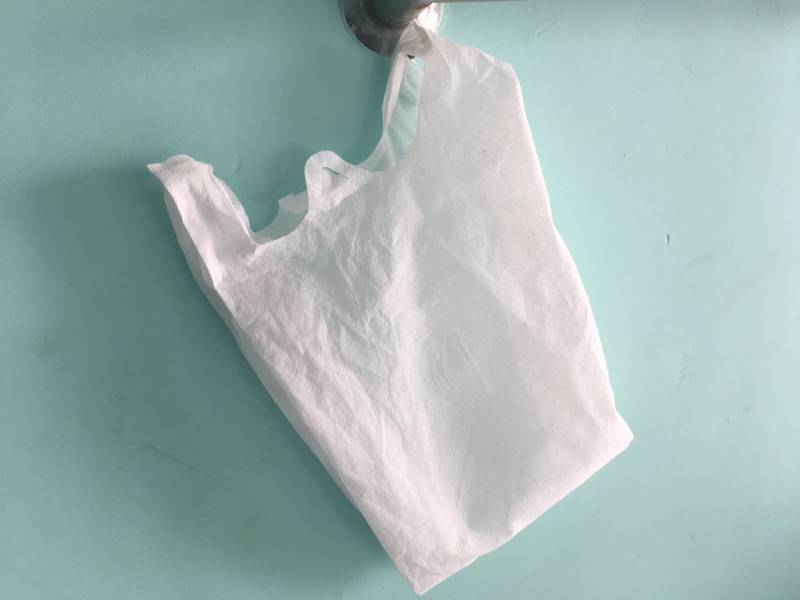Do you think polypropylene bags are eco-friendly?
By Anusha Puppala
Hyderabad: The Indian government imposed a ban on single-use plastic to fight against pollution. The Centre suggested citizens use eco-friendly alternatives to plastic. Many states such as Kerala and Maharashtra where plastic is banned rely on bags made of polypropylene (PP). It is used as an eco-friendly alternative to plastic and polybags often used in supermarkets, vegetable markets, etc. However, the persisting question is: are these bags genuinely eco-friendly? Are these bags a substitute for plastic?
Experts say no. Polypropylene bag is plastic and is equally harmful to the environment as it’s difficult to degrade. Awareness should be created among the citizens to use cloth bags or jute bags instead of Polypropylene bags, say experts.
Parveen Kaswan, an Indian Forest Officer, mentioned that Polypropylene bags are used in many places where plastic is banned. He says, “Unfortunately, people mistakenly think that it’s made of cloth. They are not a substitute for plastic, as they are plastic itself. This so-called eco-friendly bag is actually made of polypropylene (a plastic) and is processed into a fibre form. This is as harmful to the environment and difficult to degrade as plastic is.”
He adds that they are not a substitute for cloth. “Even though this product can be used multiple times, let’s not wait for them to become a new problem. They are not made of clothes, and they are not a substitute for cloth bag as well. Instead, we should opt for cloth bags and jute bags.”
No. They are not substitute of #Plastic. They are plastic itself. These bags projected as eco-friendly are actually made of #Polypropylene (a plastic) & processed into a fibre form. As #harmful to environment & difficult to #degrade as plastic. They are not substitute of cloth. pic.twitter.com/rsJ6VXbRdD
— Parveen Kaswan, IFS (@ParveenKaswan) October 11, 2019
According to polypropylene Market report, it is the second-most important standard plastic after polyethene. It is compatible with many processing technologies and is used for the most diverse applications ranging from packaging to household appliances, clothes, and vehicles. The reports stated that revenues for such type of plastic grow by, on average, 4.9% per year until 2026. In 2013, the global market for polypropylene was about 55 million tonnes. In the year 2018, almost 23.6 million tonnes of PP were processed in injection moulding.
Speaking to NewsMeter, Madhulika Choudhary, an environmentalist from Hyderabad, said, “If you burn a small piece of Polypropylene bag, it smells like plastic. No doubt it looks like cloth, but one must test it. There are many products available in the market projected as eco-friendly. We need to verify their eco-friendly nature before using it and awareness should be created.”
She noted that such plastic bags must be avoided and the government must take action against these vendors who claim it to be eco-friendly. “It’s better to use actual cloth bags and recycle or upcycle old cloth, jute, and water hyacinth bags. Leaf plates, consumable spoons, and neem sticks for brushing are also eco-friendly options. Glass or steel bottles for milk, and thick plastic or rexine bags can also be used as better alternatives to plastic or polypropylene bags.”
Subba Rao, a senior environmentalist, mentioned that any form of plastic is harmful and changing its form through recycling only extends its life. “Many states use polypropylene bags, maybe because it is above the permissible limit. However, it is still non-degradable, and that is why no plastic is ever environmental-friendly. In Taiwan, they recycle pet bottles to make sports shoes and school bags. It’s a continuous process of collection and recycles to make new material and products. All these initiatives are for extending plastic’s life and keep them away from the earth.”
How is polypropylene bags made?
Polypropylene (PP), a thermoplastic resin material, is produced by the polymerisation of propylene. It can be turned into a fibre form as well. There are two types of polypropylene bags —woven and non-woven. Woven polypropylene is made when strips or threads of PP are woven together. Non-woven bags are made from non-woven polypropylene (PP) fabric. This fabric is made with spun and bond polypropylene fibre, which is soft, smooth and air-permeable. In a spun-laid non-woven material the fibres are directly taken onto a moving web which arranges them randomly. The unprocessed web looks somewhat similar to cotton. The fibres on this web are then bound together thermally or mechanically.
The main disadvantage of polypropylene is that it is not biodegradable. It takes about 20-30 years to degrade and will release toxins in the process. It is highly flammable as well and will melt when exposed to heat and has a flash-point of 260 degrees Celsius.
Also Read: https://newsmeter.in/damaged-roads-diseases-and-plastic-ghmcs-post-monsoon-agenda/